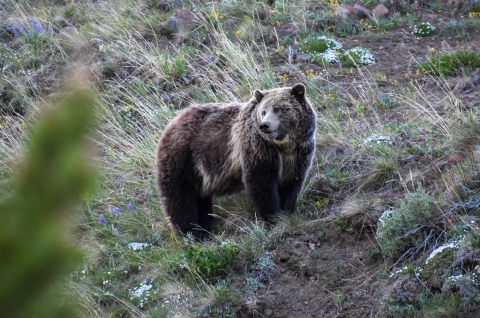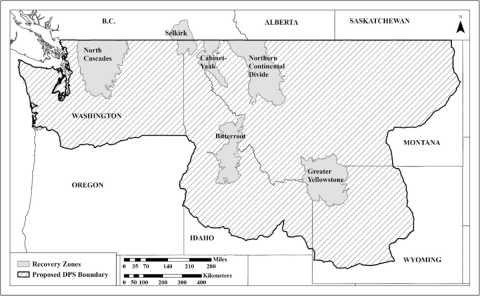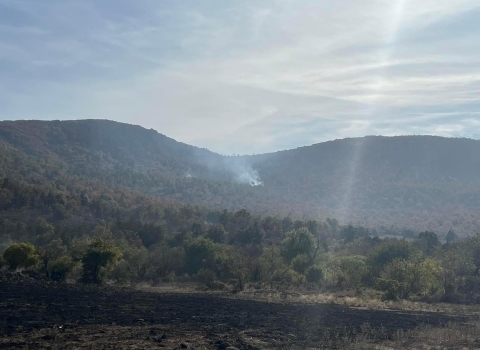DENVER — The U.S. Fish and Wildlife Service today announced a new and comprehensive approach to long-term grizzly bear recovery in the lower 48 states and the concerns of those living with and near bears. The Service is proposing a rule to clarify the geographic area where grizzly bears in the lower 48 states are subject to protection under the Endangered Species Act. The Service also proposes revisions to the current protective regulations to provide additional management flexibility for authorized agencies and individuals experiencing conflicts with grizzly bears. The Service is publishing an independently peer-reviewed updated species status assessment that compiles the best available scientific information, which helps to inform decision-making.
“This reclassification will facilitate recovery of grizzly bears and provide a stronger foundation for eventual delisting,” said Martha Williams, U.S. Fish and Wildlife Service Director. “And the proposed changes to our 4(d) rule will provide management agencies and landowners more tools and flexibility to deal with human/bear conflicts, an essential part of grizzly bear recovery.”
Distinct Population Segment
Grizzly bears were listed under the ESA in 1975 throughout the lower 48 states, including areas outside the historical range of grizzly bears. The Service’s proposed rule would revise that listing to establish a single distinct population segment (DPS) encompassing areas in Idaho, Montana, Washington, and Wyoming, where suitable habitat exists and where grizzly bears currently reside or are expected to establish as populations recover. The grizzly bear DPS would retain threatened status under the ESA. The proposed action removes ESA protections outside the newly proposed DPS, where grizzly bears do not occur and are not expected to inhabit in the future.
The proposed action is a first step towards fulfilling a settlement agreement with the state of Idaho requiring an evaluation of the grizzly bear listing in the lower 48 states by January 2026. With today’s announcement, the Service also responds to petitions from the states of Montana and Wyoming to establish and delist DPSs for the Northern Continental Divide Ecosystem and Greater Yellowstone Ecosystem, respectively, and finds these petitioned actions “not warranted”. After a thorough review of the best scientific and commercial data available, the Service found grizzly bear populations in those two ecosystems do not, on their own, represent valid DPSs.
Grizzly bear populations are now geographically closer to each other than ever, and the Service has documented grizzly bear movement between some populations, indicating recovery zones are no longer discrete. This increased movement of grizzly bears illustrates the success of conservation and management efforts to date while highlighting the importance of establishing and maintaining conservation measures and management practices that foster continued movement of bears.
Establishing a single DPS encompassing all six recovery zones will provide a comprehensive and scientifically based framework for recovery. Grizzly bear distribution has significantly expanded, largely due to the commitments of state, federal, and Tribal agencies. These partners have played a key role in the on-the-ground management of grizzly bears for over 40 years by dedicating significant resources toward monitoring and management; in addition, private landowners have made sacrifices to accommodate grizzly bears.
The Service also recognizes that recovery of small and extirpated populations relies on contributions from highly resilient populations. Maintaining all recovery zones together in one DPS will increase the speed of recovery in remaining ecosystems and the overall viability of grizzly bears, increasing the likelihood of successfully delisting the entire DPS by addressing the species’ recovery needs as a whole.
4(d) Rule
The Service’s proposed 4(d) rule will revise the existing rule to give management agencies and landowners greater flexibility and tools to take bears in the context of research and conflict management.
Grizzly bear expansion is challenging for local communities and working lands, and the Service is committed to a collaborative approach and helping partner agencies, private landowners, and livestock producers by providing additional management tools. Management tools can be implemented along with important safeguards to promote connectivity and resiliency that are necessary for delisting. The proposed 4(d) rule recognizes the need for added flexibility and responsiveness on private lands and areas where grizzly bear populations are impacting private landowners and livestock producers while continuing efforts to promote conservation in areas crucial to the eventual delisting of grizzly bears in the lower 48 as a whole.
The Service invites public comments on the proposed rule to designate a single DPS and the associated 4(d) revision during a 60-day comment period. These proposed actions will appear in the Federal Register on January 15, 2025. Once published, the 60-day public comment period will be open from January 15 through March 17. Following the closure of the public comment period, the Service will review and address comments before publishing a final rule, which is expected by January 2026.
For more information on the proposed rule (including supporting materials) and how to participate in the public comment process, please visit the project webpage at https://www.fws.gov/grizzlyrulemaking.
________________________________________________________________
Media contact: r6oc@fws.gov





